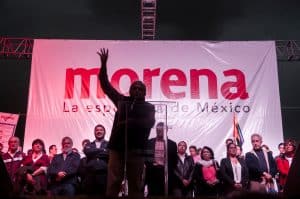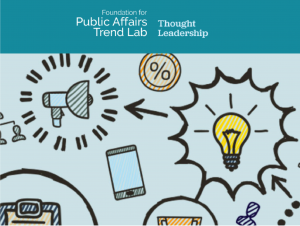Election Results in Brazil: An Update from PATRI Public Affairs
The October elections marked a radical ideological shift in Brazil and a disruption of the political establishment as structured after the end of the dictatorship in 1985 and proclamation of the democratic Constitution of 1988.
This century, Brazilians elected leftist Workers’ Party candidates to the presidency four times in a row. This time, they picked an obscure far-right lawmaker and former Army Captain, Jair Bolsonaro, to lead the country.
Almost all leaders that had been predominant in Congress, state governorships and legislatures in the last 30 years lost their seats. They were replaced by people who are more conservative, many in their first bid for elective office.
A very powerful minister, Paulo Guedes, will oversee the economy. An alumnus of the University of Chicago, Guedes has pledged to open up the economy, privatize state companies and cut the public fiscal deficit and debt.
The incoming Foreign Affairs Minister Ernesto Araújo promises to align Brazil with the international strategy of Donald Trump, who is his source of inspiration. The two presidents have had a conversation over the phone and lavishly praised each other afterwards.
It is therefore likely that American companies will be welcome by the new Brazilian government.
However, some measure of caution is advisable. Despite current optimism in the financial markets, Bolsonaro’s success depends largely on the passage of fundamental reforms, chief among them a social security overhaul.
None of his predecessors from the left or center-right have succeeded in this task. Resistance in Congress, even in the more conservative body that will take over on February 2, will be no small matter. The president-elect himself has been ambiguous in public statements about what exactly he intends to do about this issue.
Prospects for the world economy are another source of possible hurdles in the plans of the incoming president. For years one of brightest spots of the Brazilian economy, commodities exports, might now be affected by an international crisis.
In addition, Bolsonaro’s victory did not unify the sharply polarized Brazilian society. His stances on cultural issues have raised fierce opposition among a very large number of Brazilians. This could trigger political crises that could harm his administration.
Finally, a lack of experience in public office on the part of many on his team could lead them, at least initially, to commit errors that would hinder the fulfillment of many promises.[/vc_toggle][vc_single_image image=”65917″][vc_single_image image=”65918″][vc_separator css=”.vc_custom_1543423149686{margin-bottom: -50px !important;}”]
What’s to come: AMLO in Mexico

AMLO campaigned on a zero tolerance for corruption platform in a country where legacy parties in power were rocked by major cases of deceit and misconduct. In Mexico, the state-owned oil and gas firm, PEMEX, alone, is considered to have showered $11.7 billion from 2003 to 2012. The adages of “el que no tranza no Avanza,” (the one that does not cheat, does not succeed) in Mexico are deeply-ingrained cultures that AMLO will need to tackle head-on.
Mexico saw homicide rates soar to all-time record levels in the year ahead of the elections, with murder rates attaining 25 incidents per 100,000 inhabitants, respectively. By way of comparison, these levels of violence are approximately five times higher than in the U.S. In Mexico, AMLO has promised to overturn unsuccessful strategies based on open confrontation with drug cartels. The incoming Minister of Public Security Alfonso Durazo recently announced a strategy geared at addressing the roots of insecurity by prioritizing protection of citizens from violent crimes. AMLO believes in boosting family values as a means to tackle violence and have emphasised rhetoric based on ‘good versus evil’.
In terms of strategy for tackling fiscal reform, privatization and trade, Mexico will seek to move away from the model of export-led growth and integration into NAFTA value chains. AMLO’s transition government claimed to have played an active role in reverting further integration within the United States–Mexico–Canada Agreement. By opposing the creation of a North American energy community with the trade deal, AMLO claimed to have seized sovereignty over natural resources, oil and electricity so that “Mexican can decide freely.”
Latin America is experiencing the same global phenomenon as Europe and the United States in its quest for change and removal of traditional political elites. While factors instilling vexation and resentment differ from Europe and the United States, the identity politics underlying the elections in Mexico are no different: out with the old, in with the new, even if the road ahead is clouded with uncertainty.[/vc_toggle][vc_separator css=”.vc_custom_1543423157865{margin-bottom: -50px !important;}”]
Join the International Network Today!
Would your global colleagues benefit from joining The International Network, a free network open exclusively to members of the Council? If so, it’s never too late to join. The network serves as a forum for sharing ideas and best practices, and members can direct specific queries to the entire International Network, and have access to sample global public affairs resources and Network-only briefings throughout the year. Pass this e-mail on to a colleagues you think should take advantage of this opportunity!
Public Affairs Trend Lab: Thought Leadership

The Trend Lab thought leadership portal features case studies, video interviews and examples of metrics to measure the impact of your work. Participants will also learn how organizations like eBay, the U.S. Travel Association, J.P. Morgan, Patagonia and others are using thought leadership to build business and improve communities. Explore the newest Trend Lab portal component here. Have a case study of your own to share? E-mail [email protected].[/vc_toggle][vc_btn title=”Explore the portal” color=”juicy-pink” align=”center” link=”url:https%3A%2F%2Fwww.publicaffairstrendlab.com%2Fessentials||target:%20_blank|”][vc_separator css=”.vc_custom_1543423173065{margin-bottom: -50px !important;}”]
Upcoming Executive Education Programs
Webinar: The Rise of China and Global Business
December 5, 2018, 11 a.m. – 12 p.m. EST
What is the economic and political reality of the “Rise of China” phenomenon, and how will it continue to affect global business? Join the Council for a briefing on what the public affairs landscape in China looks like, as well as expert commentary on strategy and best practices, recent trends, and the region’s outlook for growth, power and influence.
Workshop: Managing the World: Best Practices for Global Public Affairs
January 24, 2019, 9 a.m. – 12 p.m. EST
Integrating global public affairs management best practices and trends is essential to making your function indispensable to your organization and strengthening your international presence. Join us for our annual workshop to hear advice and case studies from “best in class” functions on the most common global public affairs challenges – managing your global plan, global presence and global resources.
Webinar: Becoming Your Company’s Foreign Minister
February 27, 2019, 11 a.m. – 12 p.m. EST
Internationally-focused companies across different industries are more and more frequently faced with challenges that intersect business and diplomacy. So, how does one become a successful “foreign minister” for their organization? Join the Council to learn more about the 360 degree approach to public affairs, successful business diplomacy tactics, and case studies of public affairs successes in foreign markets.
Regional and Policy Updates
Brexit: The U.K. and the EU seem to be getting closer to reaching a deal on Brexit. But are they? Earlier this month, the two parties came to an agreement on a draft deal. In another victory, Prime Minister Theresa May obtained approval for the terms of the deal from the other 27 European Union members. While an important step towards finalizing the terms of Brexit, the deal still needs approval from the U.K. Parliament and the European Parliament. Politico sums up the agreement draft and a year and a half worth of negotiation work in ten key points, which according to European Commission President Jean-Claude Juncker is “the best possible” outcome. Rumors of a no-confidence vote against May and the growing momentum for a second referendum continue to add uncertainty to what the final deal may look like as the late March deadline for official Brexit approaches.
USMCA: NAFTA 2.0, or the United States–Mexico–Canada Agreement, could be in jeopardy as lawmakers on both sides of Congress have expressed concerns about details in the final text. If the agreement is blocked in Congress, the Trump administration will be faced with the options of leaving NAFTA as is, restarting the negotiations process over, or pulling out of the deal entirely. The deal is scheduled to be signed at the G20 Summit on November 30, and any last minute changes would have to be accepted by Canada and Mexico, which is unlikely. The pact’s chances of passing Congress could also be jeopardized by the steel and aluminum tariffs currently in place against Canada and Mexico, and the business, agricultural and manufacturing community recently sent a letter to USTR Lighthizer urging him to remove them to increase the chances of USMCA succeeding.
China: The rise of China is a topic that has been discussed for years, and while not new, it’s a foreign policy issue that is not going away. According to Asia studies expert Elizabeth Economy in a recent article in the Council’s Impact newsletter, “China has used trade as a tool of empire going back thousands of years, and its so-called tribute system lasted for centuries. While the imperial ambition burned more brightly in some periods than others, it has never been extinguished and is now heating up. “They are pursuing control of the South China Sea, Hong Kong and Taiwan,” Economy says. “China now controls something like 76 ports in 35 countries around the world.” China’s Belt and Road Initiative, unveiled in 2013, seeks to connect Asia with Europe and Africa.” Despite the recent tensions between China and the United States, U.S. companies are not yet actively leaving the region. Want more insights on the public affairs outlook in China? Join the Council on December 6 for our annual China briefing. Read more about the domestic and global challenges that can hinder China’s rise here.
Brands and social issues: More and more brands are expressing opinions on social and political issues, often due to pressure from both internal and external stakeholders. YouGov recently conducted a survey of British and American consumers to see if these opinions vary on the two sides of the Atlantic. Almost half (48%) of Americans say that they like brands that are willing to get involved in social issues, while 42 percent of Brits agree. More notably, more than half of respondents in both countries say that companies should have a point of view on such questions (58% in the U.S. and 57% in Britain). The bottom line is, consumers are becoming more likely to invest in brands they feel behave responsibly, and that they can trust. The report also explores questions of issue exploitation, how consumers make purchasing decisions, and how brands should communicate their messages to their audience – read the full report here.

